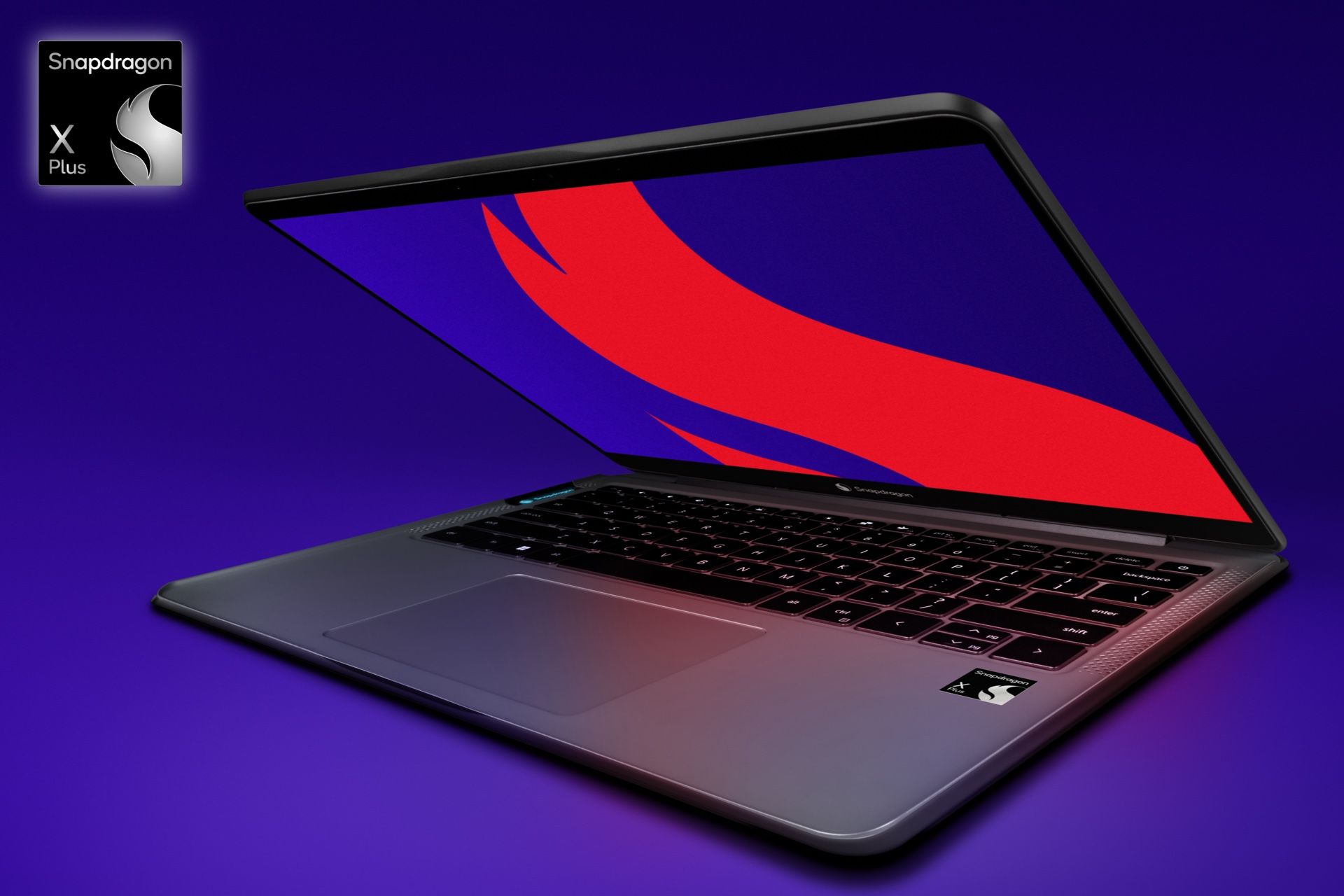Key learning points
-
Qualcomm launched Snapdragon X Plus, aiming to bring fast and efficient ARM chipsets to Windows laptops.
-
Snapdragon X Plus delivers similar performance to the flagship X Elite, with an Oryon CPU, Adreno GPU and Hexagon NPU.
-
Snapdragon
While we’re still waiting for the first Windows laptops powered by the Snapdragon X EliteQualcomm has introduced another addition to its ARM chipset lineup: the Snapdragon X Plus. The new Snapdragon
For years, Apple’s Macs have been much faster than their Windows counterparts in terms of speed and efficiency, thanks to their ARM-based M-series chipsets. Qualcomm aims to deliver a similar feat with its Snapdragon X series for Windows laptops. The company launched its flagship Snapdragon
Snapdragon X Plus: technical specifications
|
Function |
Snapdragon X Plus |
|---|---|
|
Process node |
4 nm |
|
CPU |
Qualcomm Oryon CPU:
|
|
GPU |
Adreno GPU (up to 3.8 TFLOPs) |
|
NPU |
Qualcomm Hexagon NPU (up to 45 TOPs) |
|
VPU |
Qualcomm Adreno video processing unit:
|
|
Memory |
LPDDR5x up to 64 GB, 135 GB/s bandwidth |
|
WiFi and Bluetooth |
Wi-Fi 7/6E/6, Bluetooth 5.4 |
|
USB |
USB4 |
|
Camera |
Qualcomm Spectra ISP:
|
|
Mobile modem |
Snapdragon X65 5G modem, download speeds up to 10 Gbps |
The Snapdragon X Plus shares many similarities with its flagship counterpart. It’s built on the same 4nm node process and features the same Oryon CPU (10 cores), albeit clocked slightly lower at 3.4GHz. Qualcomm claims it is 10% faster in multi-thread CPU performance compared to Apple’s M3 and 37% faster than Intel Core Ultra 7 155H. The chipset also supports high-speed RAM with up to 135 GB/s bandwidth and up to 64 GB of LPDDR5x memory.
On the GPU front, the Snapdragon Qualcomm says the GPU will support up to one HDR10 internal display with UHD resolution and 120Hz refresh rate, and up to three UHD 60Hz external displays with HDR10. The company also adds that the Adreno GPU in X Plus matches the performance of Intel’s Core Ultra 7 155H processor with half the power consumption.
Now let’s talk about the NPU in the Snapdragon X Plus. The Snapdragon X Plus contains the same Hexagon NPU as the In comparison, Apple’s latest M3 chipset only offers a maximum of 18 TOPS. Qualcomm showed off a demo where a laptop powered by the Snapdragon X Plus could generate code in the Visual Studio Code using Codegen, entirely on the device. The NPU was also demonstrated generating live captions for 100 spoken languages using Whisper on the device.
These features typically require an AI service powered by a cloud server, but Qualcomm’s Snapdragon X Plus can perform most of these tasks offline. In terms of connectivity, the Snapdragon X Plus offers Wi-Fi 7 and Bluetooth 5.4, similar to the X Elite. The X Elite chip also supports mobile connectivity, offering speeds of up to 10 Gbps thanks to the Snapdragon X65 5G Modem.
The launch of Qualcomm Snapdragon X Plus makes it clear that the company is reflecting its approach to the smartphone processor market. Just as Qualcomm caters to different budgets with its smartphone chipsets, Qualcomm wants to offer laptop manufacturers options and have them ready just in time for launch. While we don’t have an exact date for the release of Snapdragon X Plus-based laptops, Qualcomm says they will hit the market around the same time as devices powered by the Snapdragon

